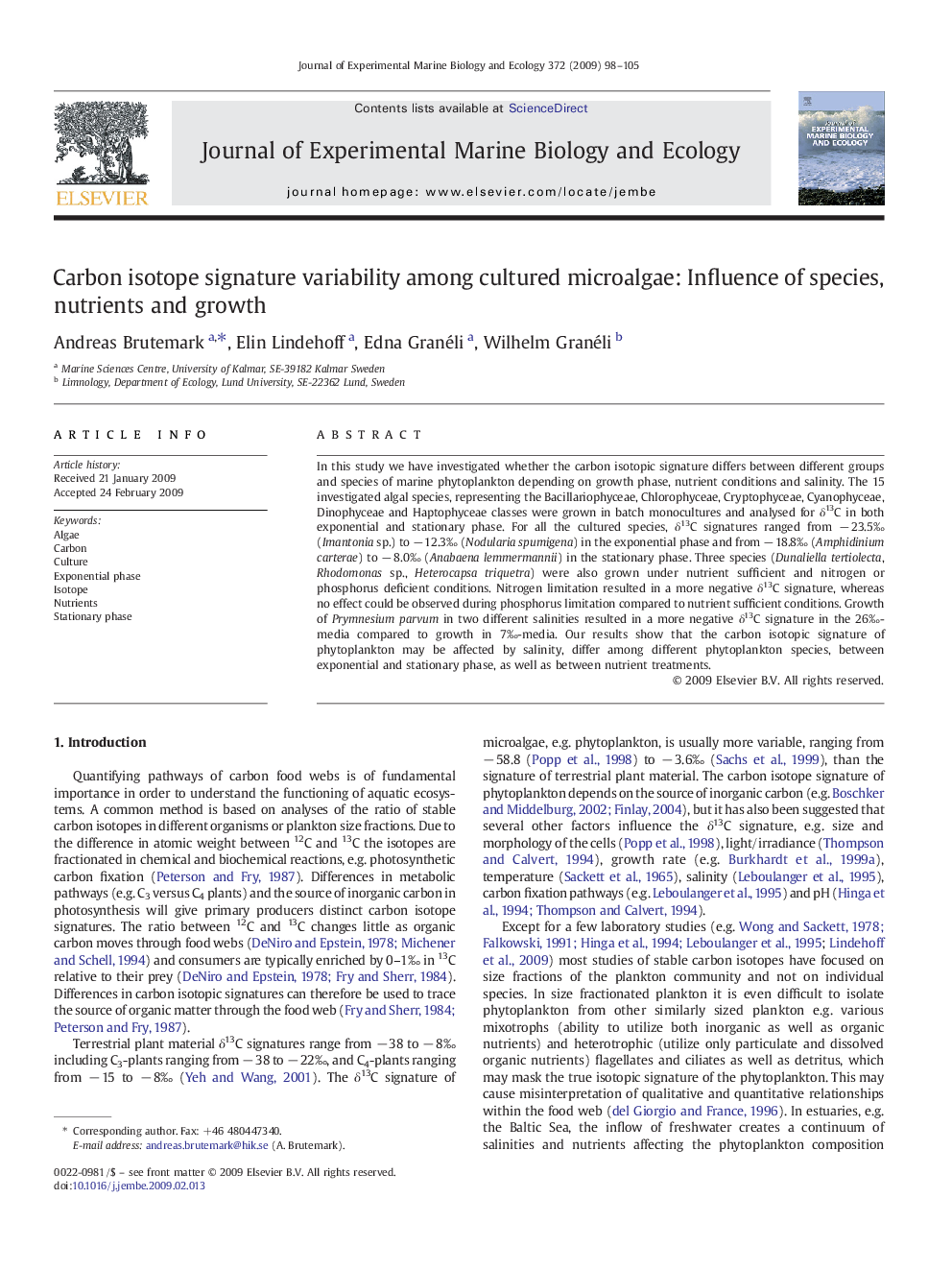| Article ID | Journal | Published Year | Pages | File Type |
|---|---|---|---|---|
| 4397001 | Journal of Experimental Marine Biology and Ecology | 2009 | 8 Pages |
In this study we have investigated whether the carbon isotopic signature differs between different groups and species of marine phytoplankton depending on growth phase, nutrient conditions and salinity. The 15 investigated algal species, representing the Bacillariophyceae, Chlorophyceae, Cryptophyceae, Cyanophyceae, Dinophyceae and Haptophyceae classes were grown in batch monocultures and analysed for δ13C in both exponential and stationary phase. For all the cultured species, δ13C signatures ranged from − 23.5‰ (Imantonia sp.) to − 12.3‰ (Nodularia spumigena) in the exponential phase and from − 18.8‰ (Amphidinium carterae) to − 8.0‰ (Anabaena lemmermannii) in the stationary phase. Three species (Dunaliella tertiolecta, Rhodomonas sp., Heterocapsa triquetra) were also grown under nutrient sufficient and nitrogen or phosphorus deficient conditions. Nitrogen limitation resulted in a more negative δ13C signature, whereas no effect could be observed during phosphorus limitation compared to nutrient sufficient conditions. Growth of Prymnesium parvum in two different salinities resulted in a more negative δ13C signature in the 26‰-media compared to growth in 7‰-media. Our results show that the carbon isotopic signature of phytoplankton may be affected by salinity, differ among different phytoplankton species, between exponential and stationary phase, as well as between nutrient treatments.
